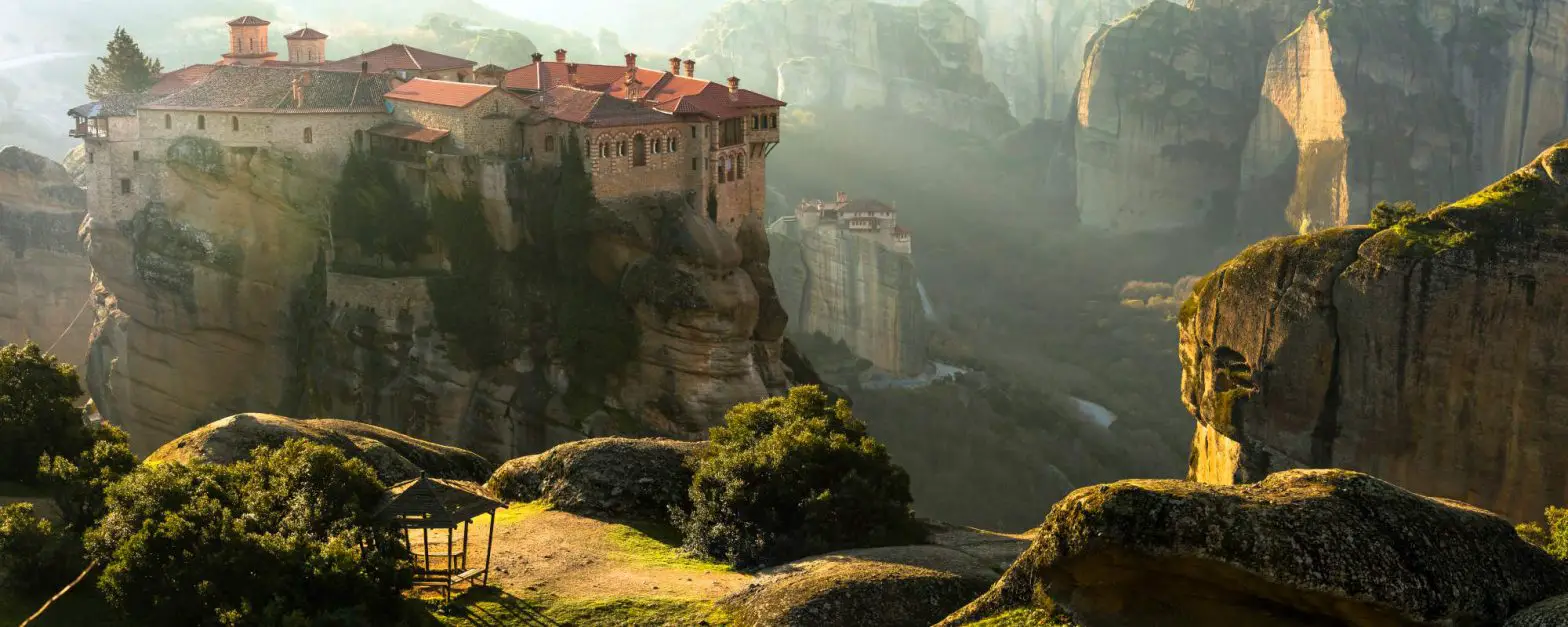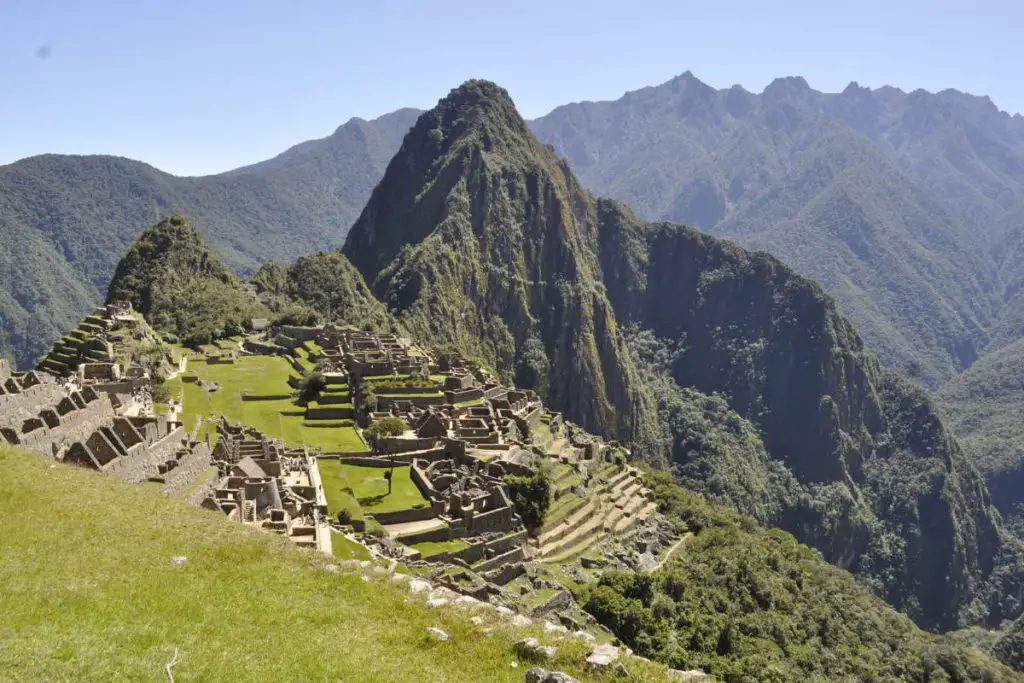Beyond the classic Seven Wonders of the World, our planet brims with countless marvels, both natural and human-made, that are worth celebrating. These ‘Alternative Seven Wonders of The World’ offer a fresh perspective on global grandeur, spotlighting the underappreciated yet equally awe-inspiring. This collection embraces diversity and transcends geographical boundaries, venturing to the unexplored corners of the globe to reveal extraordinary sites of culture, history, and unparalleled natural beauty.
The original “Seven Wonders of the World“, describes seven great constructions known in the Hellenistic period – that’s why they are also known as the “Seven Wonders of the Ancient World”. In fact, in the Hellenistic era, each famous traveler had his own version of the list, but the best known and earliest surviving was from a poem by Greek-speaking epigrammist Antipater of Sidon, which he described in a poem composed about 140 BC:
“I have set eyes on the wall of lofty Babylon on which is a road for chariots, and the statue of Zeus by the Alpheus, and the hanging gardens, and the Colossus of the Sun, and the huge labor of the high pyramids, and the vast tomb of Mausolus; but when I saw the house of Artemis that mounted to the clouds, those other marvels lost their brilliancy, and I said, ‘Lo, apart from Olympus, the Sun never looked on aught so grand.'”
But, in fact, all “seven wonders of the world” existed at the same time for a period of fewer than 60 years. And now, only the Great Pyramid of Giza is still in existence. All the others somehow were gone.
Alternative Seven Wonders Of The World
If Antipater of Sidon was living in more recent times, say, in the
7. Mont Saint-Michel of France
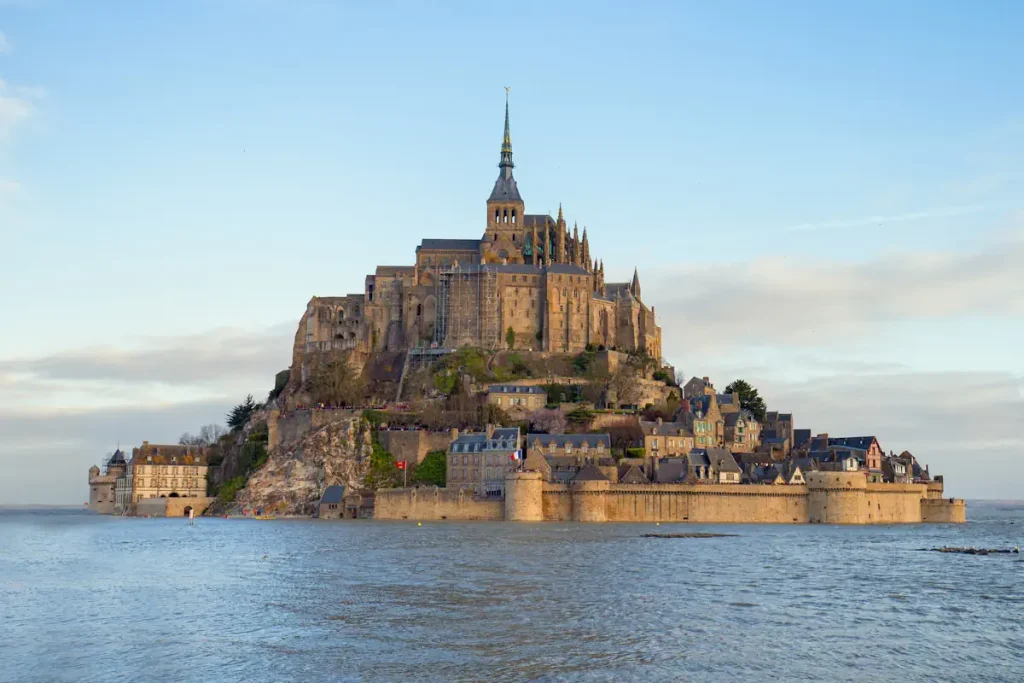
Mont Saint-Michel is a small rocky island located in Normandy, France, and it’s best known for the stunning medieval architecture that tops it, the Abbey of Mont Saint-Michel. This historic place is one of the most iconic landmarks in France.
The island is best known for its dramatic tides which can vary greatly as much as 14 meters. Due to the quick-moving tide, surrounding waters can move in quickly, which was used as a strategic defense mechanism in the past. With the changing tides, the view of Mont Saint-Michel can significantly differ, creating a unique and dynamic visual experience.
Historically, Mont Saint-Michel was a strategic fortification, and since the 8th century AD, it has been the seat of the monastery from which it draws its name. The abbey is an architectural marvel, with Gothic spires, stout defensive walls, delicate flying buttresses, and delicate aerie-like details.
During the French Revolution and up until 1863, the abbey was used as a prison, a period during which it underwent various architectural changes. It was listed as a historic monument in 1874, and the prison was finally closed in 1863, giving place to large-scale restoration work which continued well into the 20th century.
One of France’s most recognizable landmarks, visited by more than 3 million people each year, Mont Saint-Michel and its bay are on the UNESCO list of World Heritage Sites. Over 60 buildings within the commune are protected in France as monuments
6. Hagia Sophia of Turkey
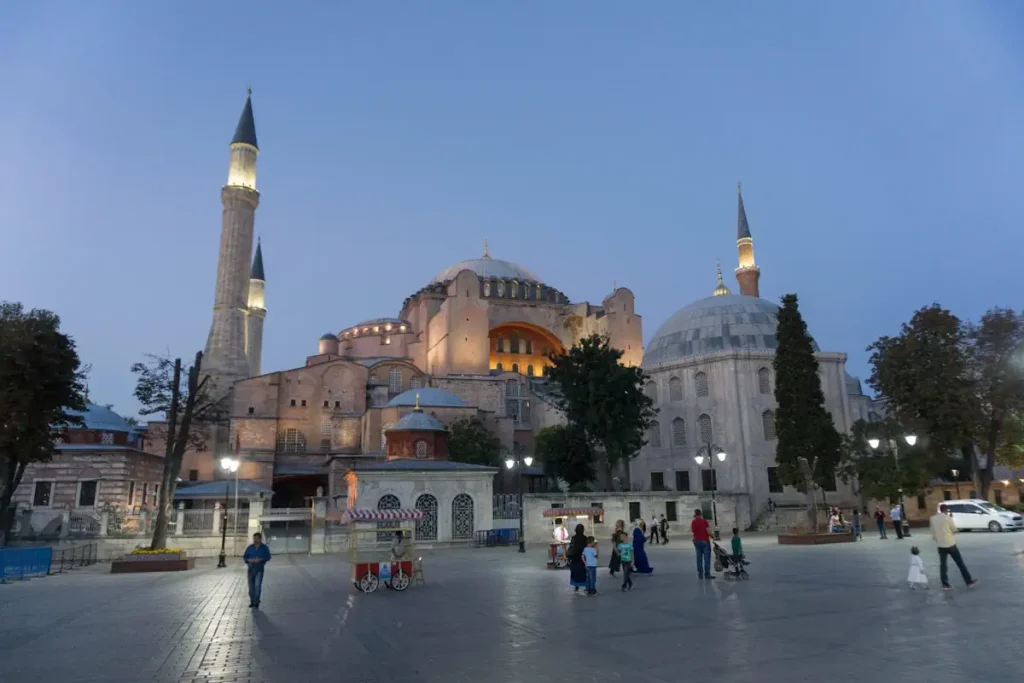
The Hagia Sophia, whose name means “Holy Wisdom” in Greek, is a significant architectural structure and historical site located in Istanbul, Turkey. It’s known for its massive dome, which was a significant achievement of Byzantine architecture.
The Hagia Sophia was constructed in the 6th century during the reign of Byzantine Emperor Justinian I. Initially, it was an Eastern Orthodox cathedral and the seat of the Patriarchate of Constantinople. It was then converted into a Roman Catholic church in 1204 during the Fourth Crusade.
In 1453, after the Ottoman Turks conquered Constantinople, it was converted into a mosque by Sultan Mehmed II. As a mosque, minarets were added, Christian mosaics were plastered over, and Islamic features – such as the mihrab, minbar, and four minarets – were added.
In 1935, the Hagia Sophia was secularized and turned into a museum as part of the Turkish government’s efforts to show the secular nature of the modern Turkish state. Its status as a museum allowed it to be appreciated both for its historical and architectural significance.
However, in July 2020, the Turkish government controversially converted the Hagia Sophia back into a mosque. Despite this change, it remains open to visitors of all faiths, although they must respect Islamic practices such as removing shoes and refraining from loud conversation during prayer times.
Architecturally, the Hagia Sophia is known for its massive dome (102 feet/31.09 meters in diameter and 184 feet/56.08 meters in height), semi-domes, and rich mosaics. The dome is considered a marvel of ancient engineering, as it seems to float above the massive nave. The interior of the Hagia Sophia is adorned with Christian and Islamic art, including intricate mosaics depicting religious figures and calligraphy of Arabic inscriptions.
5. St. Peter’s Basilica of Vatican
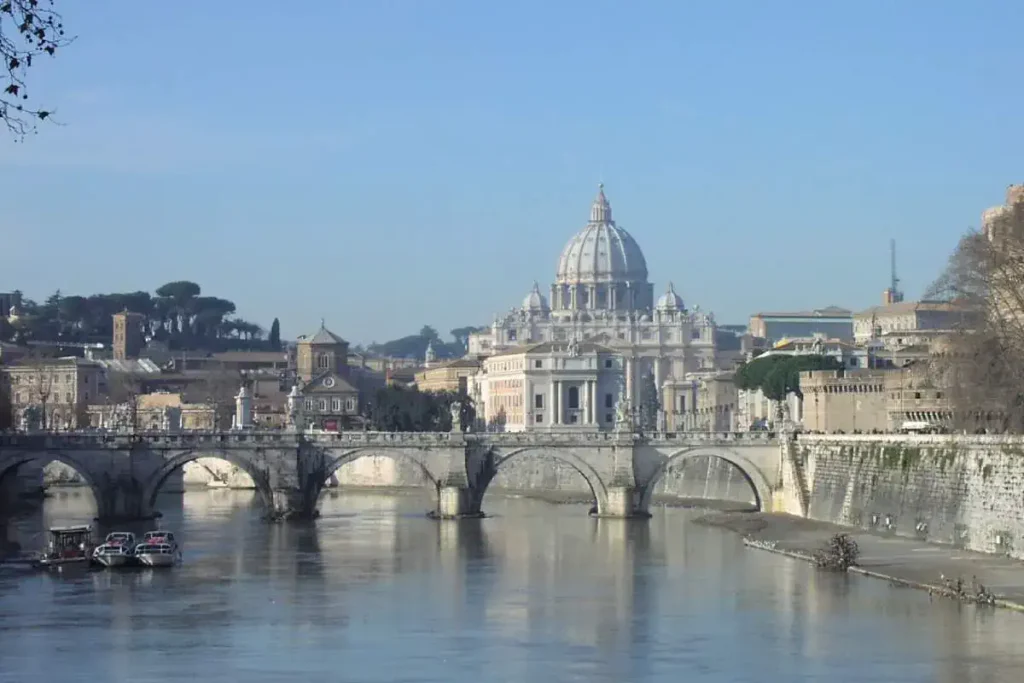
Designed principally by Donato Bramante, Michelangelo, Carlo Maderno, and Gian Lorenzo Bernini, St. Peter’s Basilica, officially known in Italian as the Basilica Papale di San Pietro in Vaticano is the most renowned work of Renaissance architecture and one of the largest churches in the world.
Located in Vatican City, an independent city-state enclaved within Rome, Italy, it is one of the largest Christian churches in the world and has long been a central pilgrimage site.
The basilica stands on the traditional site where Peter – the apostle who is considered the first pope – was crucified and buried in the 1st century AD. The current building, however, dates back to the 16th century.
In the early 1500s, it was decided that the old basilica should be rebuilt. The planning and construction process involved several popes and architects, most notably Donato Bramante, Michelangelo, and Gian Lorenzo Bernini. Michelangelo designed the dome, which was later completed by others, and it remains one of the most iconic features of the Roman skyline.
St. Peter’s Basilica is renowned for its Renaissance architecture. Inside, it is filled with many masterpieces of art and architecture, such as Michelangelo’s Pieta, Bernini’s 29-meter-high (95 feet) baldachin over the papal altar, and the monument to Pope Alexander VII.
The basilica also includes St. Peter’s Square (Piazza San Pietro), a grand elliptical space decorated with fountains, and an Egyptian obelisk. The square is often the site of religious and public gatherings.
4. Taj Mahal of India
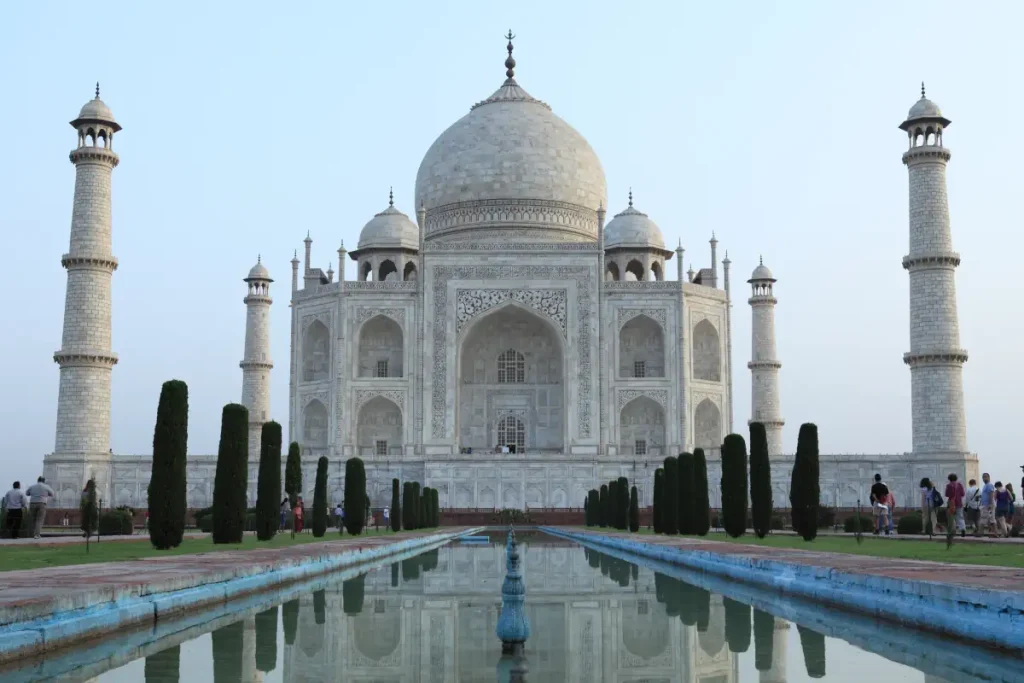
Designated as a UNESCO World Heritage Site in 1983 for being “the jewel of Muslim art in India and one of the universally admired masterpieces of the world’s heritage”, the Taj Mahal (Persian for Crown of Palaces) is an ivory-white marble mausoleum on the south bank of the Yamuna river in the Indian city of Agra. It was commissioned in 1632 by the Mughal emperor, Shah Jahan (reigned 1628-1658), to house the tomb of his favorite wife, Mumtaz Mahal.
The Taj Mahal is considered the finest example of Mughal architecture, a style that combines elements from Persian, Ottoman, Indian, and Islamic architectural styles. The complex includes the main tomb of Mumtaz Mahal and Shah Jahan, a mosque, a guest house, and formal gardens.
The most iconic feature of the Taj Mahal is its spectacular dome, known as an onion dome, which is nearly 35 meters (115 feet) high and is surrounded by four smaller domes. The building is flanked by four minarets. The exterior is decorated with intricate floral patterns, precious and semi-precious gemstones, and verses from the Quran.
One of the most interesting features is that the Taj Mahal appears to change color depending on the time of day, with hues varying from pinkish in the morning, milky white in the evening, and golden in the moonlight.

Related: Seven Wonders of the Modern World
3. Meteora Suspended Rock Monasteries of Greece
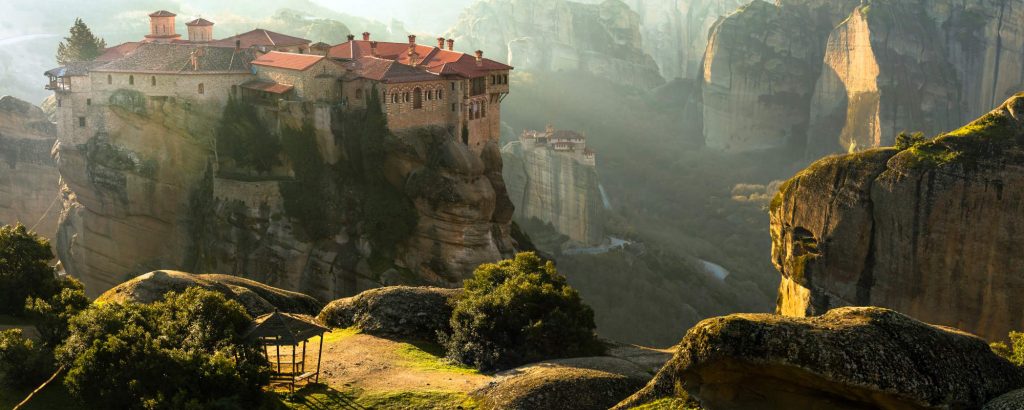
Meteora, meaning “suspended in the air” or “in the heavens above”, is one of the largest and most important complexes of Eastern Orthodox monasteries in Greece. It’s second only to Mount Athos. The monasteries are located in the region of Thessaly, near the town of Kalambaka at the northwestern edge of the Plain of Thessaly.
The Meteora region is known for its towering rock formations, which appear almost otherworldly. These rocks are a result of geological changes that happened over 60 million years ago when the whole area was under a large sea and movements of the Earth’s crust eventually caused the sea to recede, leaving behind these massive rock formations.
The monasteries themselves were built during the Middle Ages, with the first one being constructed in the 14th century. Hermits and monks seeking solitude and spiritual enlightenment initially lived in caves within the rock towers. As their numbers grew, they started constructing monasteries on top of these rocks, many hundreds of feet up. They used ropes, ladders, and nets to haul up the construction materials and the result is a series of spectacular buildings that seem to defy gravity.
Six of the monasteries remain active and are open to visitors:
- Great Meteoron or Monastery of Transfiguration
- Varlaam Monastery
- Rousanou Monastery or Monastery of St. Barbara
- St. Nikolaos Anapafsas Monastery
- Holy Trinity Monastery
- St. Stephen’s Monastery
These monasteries house precious collections of frescoes, icons, and manuscripts. The Monastery of Great Meteoron is the largest and oldest one and has a museum open to the public.
2. Sigiriya Rock Fortress of Sri Lanka

A very popular tourist destination, Sigiriya, also known as Lion’s Rock, is an ancient rock fortress located near the town of Dambulla in the Central Province of Sri Lanka. Dating back to the 5th century CE, it is often regarded as one of the most remarkable archaeological sites in the world.
Sigiriya was developed into a complex city and fortress by King Kasyapa (477 – 495 CE). The rock itself is a magma plug from an extinct volcano that rises 200 meters (656 feet) above the surrounding plains. The top of the rock is flat and is about 1.5 hectares in area. King Kasyapa built his palace on this summit, and from this height, the views across the surrounding landscape are spectacular.
The fortress complex includes remnants of a ruined palace, surrounded by an extensive network of fortifications, vast gardens, ponds, canals, alleys, and fountains. The entrance to the fortress was through a gatehouse in the shape of a huge lion, thus the name Lion’s Rock. Today, only the lion’s paws remain.
The Sigiriya site also includes the Sigiriya Frescoes or the Sigiriya Damsels, which are located in a sheltered pocket of the rock and are accessed by a spiral stairway. These are exquisite paintings of women, perhaps celestial nymphs, and show a high degree of skill and artistry.
Another highlight of Sigiriya is the Mirror Wall, so named because of its high level of polish. The wall contains inscriptions known as the Sigiri Graffiti, dating from the 6th to the 14th centuries. These ancient scripts, etched by visitors to the rock, contain poems, thoughts, and comments about the frescoes and are of great historical and literary importance.
Sigiriya is recognized as a World Heritage Site by UNESCO for its unique architecture, landscaping, and engineering, as well as for the historical and cultural significance associated with it.
1. Angkor Wat of Cambodia

Angkor Wat is a temple complex in Cambodia and the largest religious monument in the world, with the site measuring 162.6 hectares (1,626,000 m2; 402 acres). It was originally constructed in the first half of the 12th century (between 1113 and 1150) as a Hindu temple dedicated to the god Vishnu for the Khmer Empire, transitioning into a Buddhist temple towards the end of the 12th century.
The name “Angkor Wat” translates to “City of Temples” or simply “City Temple”. The design and layout of the complex are based on the classical style of Khmer architecture. The temple is admired for the grandeur and harmony of its architecture, its extensive bas-reliefs, and the numerous devatas (minor female deities) adorning its walls.
The temple is a representation of Mount Meru, the home of the gods in Hindu mythology. It is a quincunx of towers, enclosed by a moat and three galleries. The central tower, which is the tallest, is 65 meters high (213 feet). The Angkor Wat is known for having more than 3000 beguiling apsaras (heavenly nymphs) carved into its walls.
It is located about six kilometers north of the modern city of Siem Reap, and it’s part of the Angkor Archaeological Park, a vast area that includes several other notable temples including the Bayon, Ta Prohm, and Angkor Thom, the last capital city of the Khmer empire.
Angkor Wat became a symbol of Cambodia, appearing on its national flag, and it is the country’s prime attraction for visitors. It was declared a UNESCO World Heritage Site in 1992. At that time, it was also noted that the site was at risk due to looting and has been under restoration with the help of international teams ever since.
Sources
- Mont Saint-Michel on Wikipedia
- Hagia Sophia on Wikipedia
- St. Peter’s Basilica on Wikipedia
- Taj Mahal on Wikipedia
- Meteora on Wikipedia
- Sigiriya on Wikipedia
- Angkor Wat on W
ikipedia
- Moon Landings: All-Time List [1966-2025] - February 2, 2025
- What Is Max-Q and Why Is It Important During Rocket Launches? - January 16, 2025
- Top 10 Tallest Rockets Ever Launched [2025 Update] - January 16, 2025
